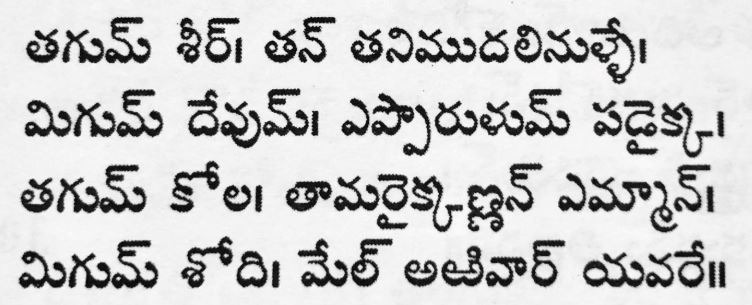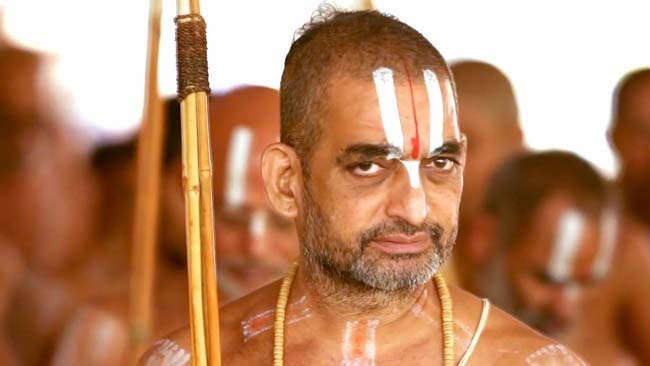As Sugreeva was taking a walk on the mount of Kishkinda, he spotted two youngsters walking on the shore of river, Pampa. They were dressed like sages but looked like princes. He did not know that they were Rama and Lakshmana. He sent Hanuman (in disguise) to find out their details.
Hanuman approached them and looked into Sri Rama’s eyes. That was it! Don’t know what happened to him for a while but he came back to senses and rested at Rama’s feet. What happened to him from the time he looked into Rama’s eyes and till he regained himself at His feet? He lost himself in those naturally beautiful yet soothingly majestic eyes of Rama.
Later, Hanuman met Sitha (amma) in Lanka. She asked him to prove that he was Rama’s messenger. Hanuman remembered the first time he got lost into those beautiful eyes of Sri Rama Chandra and answered…
‘Ramaha Kamalapatraakshaha, Sarva satthva mano:haraha’
Rama has beautiful lotus petal shaped eyes. Not only humans, but trees or even water was known to have been attracted to his mesmerising form and heart-drenching qualities, all of which can simply be experienced just watching His eyes. If you by chance get past His eyes, every single element of His body is again a divine whirlpool!
This is the Unique Identification for God, the eyes that one can simply get immersed and drowned into! This quality of God is termed as ‘Pundareekaakshatvam’ (lotus-petal-shaped-eyed)

Are you saying that anyone who has beautiful attractive eyes is God!? That’s right. But, the fact is there is none other than God who has the eyes that can attract not only living beings but also anything that exists including nature!!
How do we know nature also was attracted to Rama? Valmiki Ramayana describes how Rama’s mere presence brought freshness and life to all the trees and the rivers flowing through Ayodhya. When Rama was returning from the 14-year exile, the entire place turned pleasant from being lifeless!
Nammalwar says to Hanuman in one of his pasurams (poems), ‘I have also reached the shore of those eyes just like you!’ Those eyes that decorate the divine body of God have the power to define the structure of the existence. They form the basis of creation, sustenance and change to the entire existence. Below is the verse that explains how God has eyes that rightly suit the tasks He takes up. They allow Him to manage the entire existence with ease. They work day and night, but are never tired!

Those eyes belong to a divine body, each part of which exhibit unquestionable authority. When Parasurama challenged Rama to draw an arrow using Vishnu Dhanush (the bow used by Vishnu, passed onto him from Agastya). The ease and the style with which Rama took up that challenge and tied the string of the bow, began to aim the arrow captivated Parasurama completely. He bowed down to Rama realising that He was none other than Lord Srimannarayana!
Notice how Nammalwar references Ramayana and connects the qualities of Rama with that of Para tattva (the supreme most authority in the entire existence). It is said that a reference in ithihasa (history) is to be accepted only when it does not deviate from the smruthi (science of righteousness – dharma sastra). Similarly, a reference from smruthi can be accepted only when it does not deviate from that of the sruthi (vedas). The order of precedence is as follows:

Sruthi <- Smruthi <- Ithihas <- Purana <- Agama <- Prabandhas
These days, we hear and read several variations of knowledge from countless sources of information. When you are in doubt of the validity of what you hear, check for its correctness through taking one level up and finding its reference.
Example: If someone quotes something from a Purana, and you know it conflicts with what Ithihasa says about the same topic, you can simply consider that part of purana to be a non-authoritative scriptural reference.
From the discourse of Sri Chinna Jeeyar Swamiji
– 5 th August 2019, Bhagavad Vishayam


